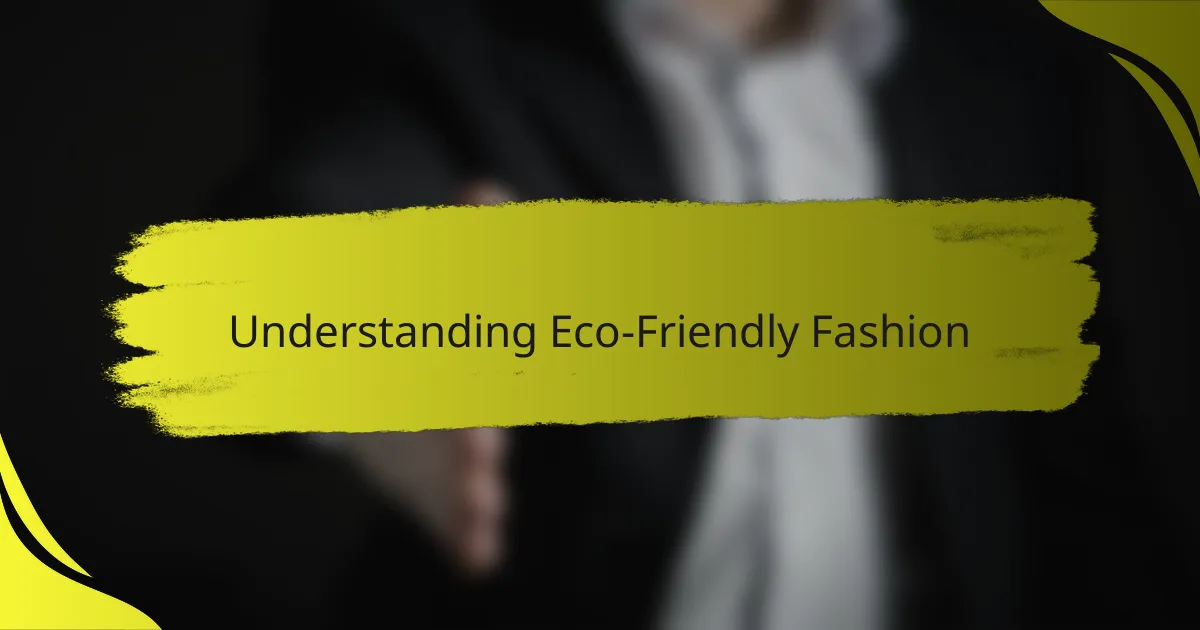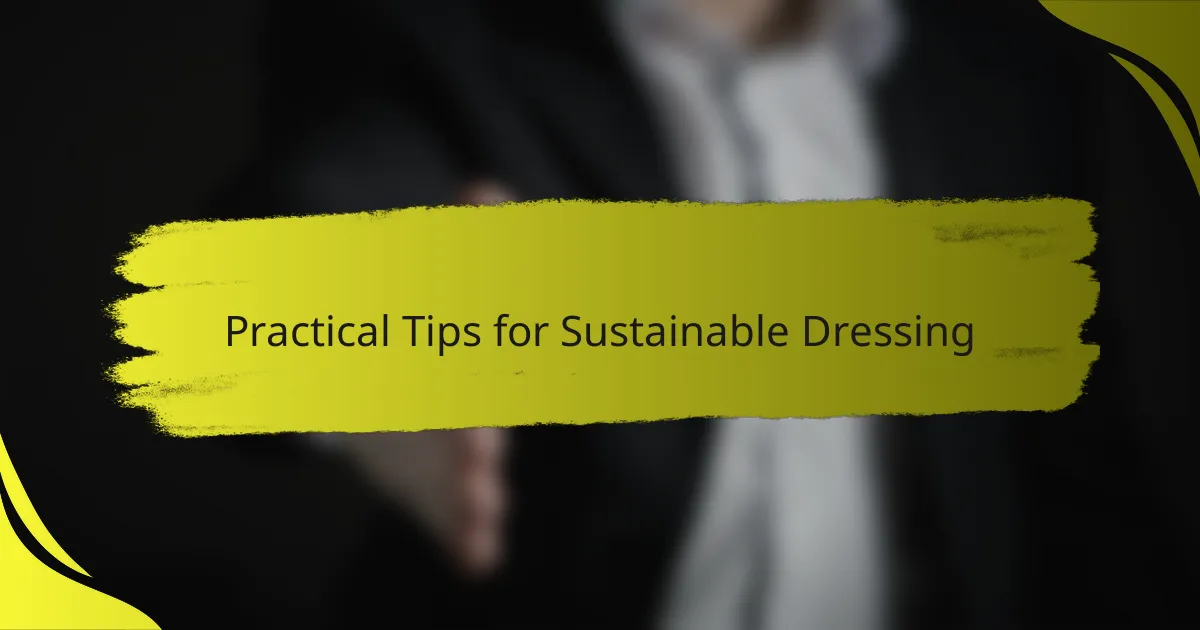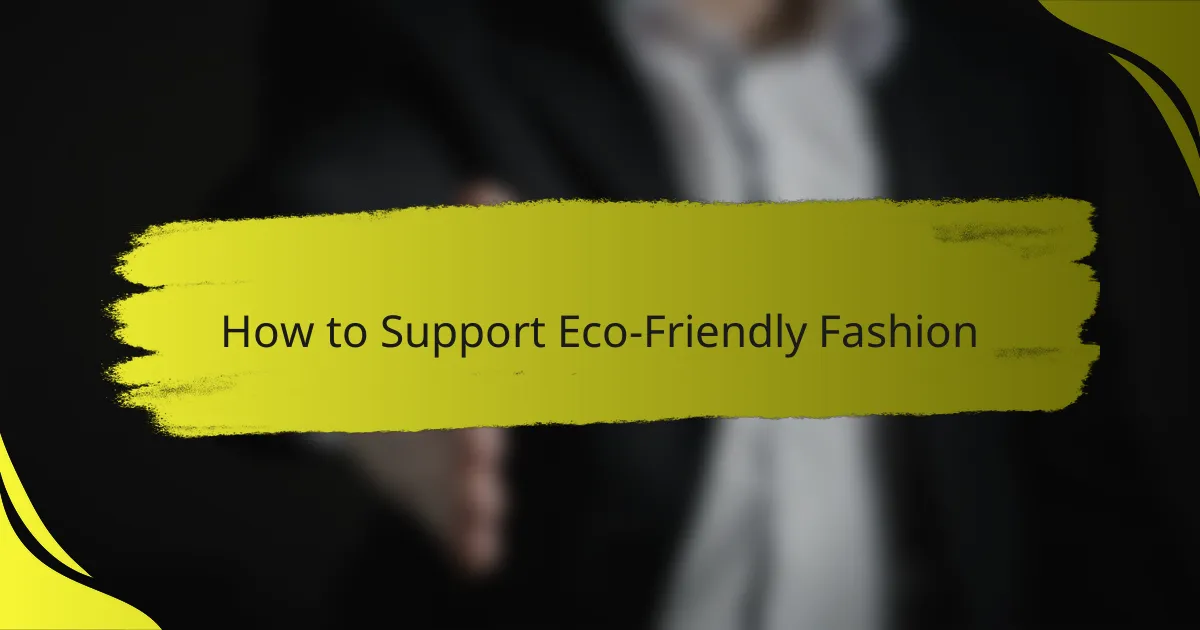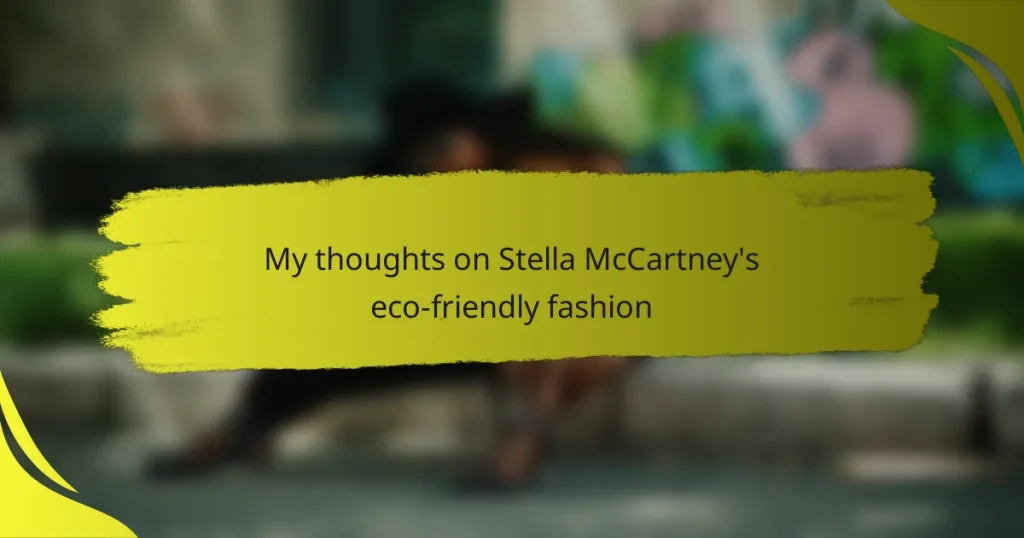Key takeaways
- Eco-friendly fashion emphasizes sustainability, using materials like organic cotton and recycled fabrics to reduce waste and pollution.
- Stella McCartney’s brand exemplifies luxury combined with ethical practices, refusing to use leather or fur while maintaining stylish designs.
- Key sustainable practices include innovation with textiles, transparency in production, and collaborations with environmental organizations.
- Supporting eco-friendly fashion involves conscious consumerism, sharing knowledge about sustainable brands, and prioritizing quality over quantity in purchases.

Understanding Eco-Friendly Fashion
Eco-friendly fashion, in my view, is more than just a trend—it’s a reflection of how deeply we care about our planet. Have you ever stopped to wonder where your clothes come from or how they’re made? For me, realizing that sustainable fashion reduces waste and pollution made me rethink my own shopping habits.
What strikes me about eco-friendly brands is their commitment to using materials like organic cotton or recycled fabrics. These choices don’t just sound good on paper—they feel good knowing fewer resources are drained and harmful chemicals avoided. It’s a small but powerful way to make a positive impact while still enjoying style.
I often ask myself if fashion can truly be both sustainable and chic. From what I’ve seen, it’s absolutely possible when brands prioritize transparency and responsibility. Understanding this balance has made me appreciate eco-friendly fashion not just as clothing, but as a statement of values.

Overview of Stella McCartney’s Brand
Stella McCartney’s brand, to me, stands out as a pioneer in merging luxury fashion with a strong ethical backbone. Have you noticed how rare it is to find high-end designers who refuse to use leather or fur? Her commitment to cruelty-free materials truly sets her apart in the fashion world.
What I find inspiring is how Stella doesn’t sacrifice style for sustainability. Her collections feel fresh and modern, yet every piece carries a deeper purpose. It makes me think, why can’t all fashion brands care this much about the planet without compromising on elegance?
From my experience following her work, it’s clear that Stella McCartney treats eco-friendly fashion as an ongoing mission, not just a seasonal statement. This sincerity resonates with me because it shows a brand that’s about lasting impact, not fleeting trends.

Key Sustainable Practices Used
One of the key sustainable practices Stella McCartney uses that really caught my attention is her focus on innovative materials like regenerated cashmere and recycled nylon. It made me wonder—how often do we stop to consider the journey of fabric before it reaches our closet? Knowing she invests in cutting-edge textiles that reduce waste made me feel more connected to the clothes I choose.
Another practice that stands out is her strict avoidance of animal products like leather and fur. I’ve always struggled with the ethics of animal-derived materials, so seeing a luxury brand boldly reject them feels like a breath of fresh air. It pushes me to think: Can high fashion truly thrive without harming animals? Stella’s work shows that the answer is a resounding yes.
What I find especially impressive is her transparency and collaborations with environmental organizations. She’s not just ticking boxes but actively working to improve industry standards. This commitment feels personal to me because it reminds us that behind every garment is a responsibility—not just to style, but to the planet and future generations.

Impact on the Fashion Industry
Stella McCartney’s impact on the fashion industry goes beyond her impressive designs; it challenges the very norms that many brands have long accepted. Have you ever noticed how rare it is for luxury labels to prioritize sustainability so consistently? Her example pushes the entire industry to rethink what’s possible when ethics and elegance come together.
From what I’ve observed, her commitment sparks conversations among designers and consumers alike about responsibility and innovation. It makes me wonder—could her approach be the catalyst for a wider shift toward more eco-conscious practices across the board? Seeing this ripple effect gives me hope that sustainable fashion can become the new standard rather than an exception.
What resonates most with me is how Stella’s leadership proves that eco-friendly fashion is not just a niche market but a viable, influential force shaping the industry’s future. Her work demonstrates that caring for the planet doesn’t mean compromising creativity or luxury—it means redefining them for a better tomorrow.

Personal Reflections on the Brand
When I first encountered Stella McCartney’s brand, I was genuinely struck by how authentically she embodies her eco-friendly values. It’s rare to see a designer who not only talks the talk but lives it through every stitch and seam. I remember thinking, could this be the kind of fashion that makes me more mindful about my own consumption?
What really resonates with me is how effortless her pieces look, despite the intense ethical considerations behind them. It’s like she’s found a way to blend conscience with creativity that doesn’t demand sacrifice from the wearer. Have you ever felt that thrill when wearing something that feels good ethically and aesthetically? That’s exactly the vibe Stella’s brand gives me.
Sometimes, I reflect on how her approach challenges my own perceptions of luxury. I used to associate luxury strictly with opulence and excess, but Stella McCartney’s work makes me realize it can also mean responsibility and respect for nature. It’s been a personal journey, reconsidering what truly makes fashion valuable beyond just its price tag.

Practical Tips for Sustainable Dressing
One practical tip I’ve found essential is to invest in timeless pieces rather than chasing fast fashion trends. Have you ever bought something trendy only to see it lose appeal in a few months? Choosing classic styles not only feels better for my wallet but also reduces waste, which aligns with the sustainable values Stella McCartney champions.
I also try to embrace the power of caring for my clothes properly. Simple habits like washing garments less frequently, using gentle detergents, or repairing small damages have made me realize how much life I can extend for each item. It’s a small effort, but knowing I’m keeping something out of the landfill gives me a rewarding sense of contribution.
Finally, I’ve started exploring secondhand and vintage shopping as a way to refresh my wardrobe sustainably. At first, I was hesitant—would I find anything I truly love? But it turns out, hunting for pre-loved gems connects me more deeply to my clothing and reminds me that fashion doesn’t need to be new to feel special. Wouldn’t you agree that giving something a second chance is its own form of eco-friendly style?

How to Support Eco-Friendly Fashion
Supporting eco-friendly fashion, to me, starts with being a conscious consumer. Have you ever paused before a purchase to think about where that garment came from? I found that simply asking this question changed the way I approach shopping—it made me choose brands that align with my values, like Stella McCartney’s.
Another way I support sustainable fashion is by spreading the word. When I talk about eco-friendly brands with friends or on social media, it feels like I’m part of a movement. Do you ever feel that sharing your passion can inspire others to think differently? That ripple effect matters a lot.
Lastly, I’ve learned that patience is key. Waiting to buy something until I truly need it—or saving for quality over quantity—has helped me avoid impulse buys. It’s not always easy, but investing in pieces that will last is how I feel I’m really supporting the planet and the designers who care about it. Have you tried this approach before?


